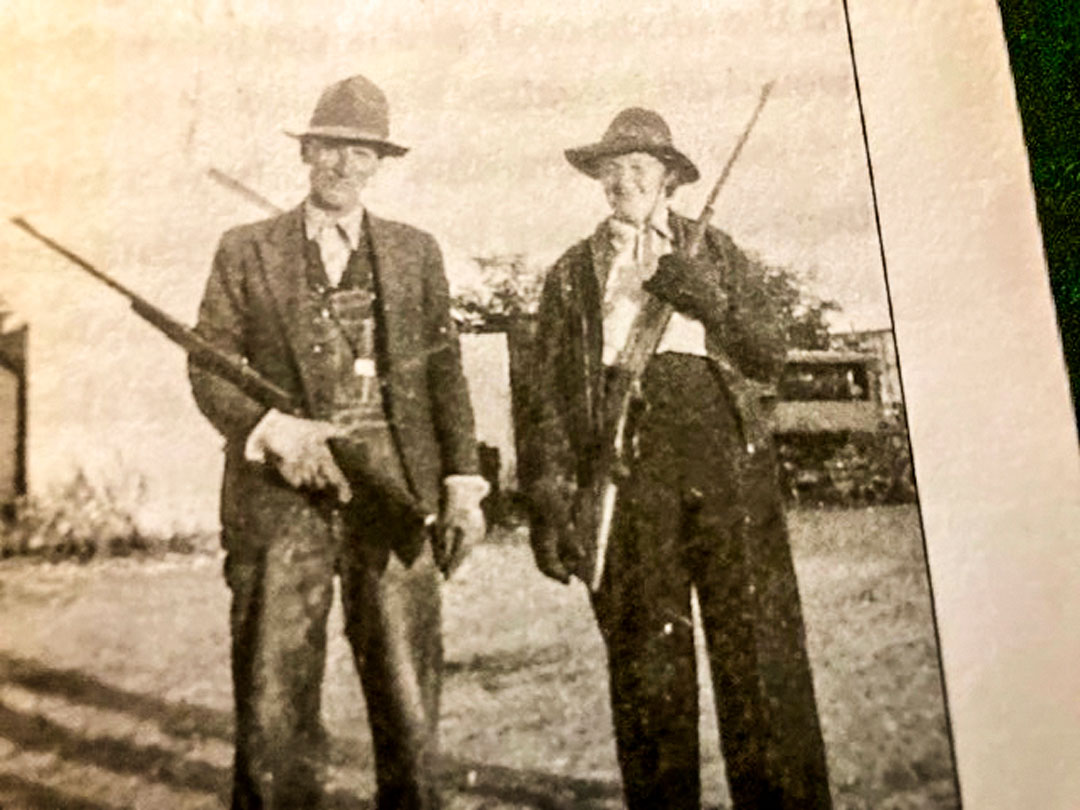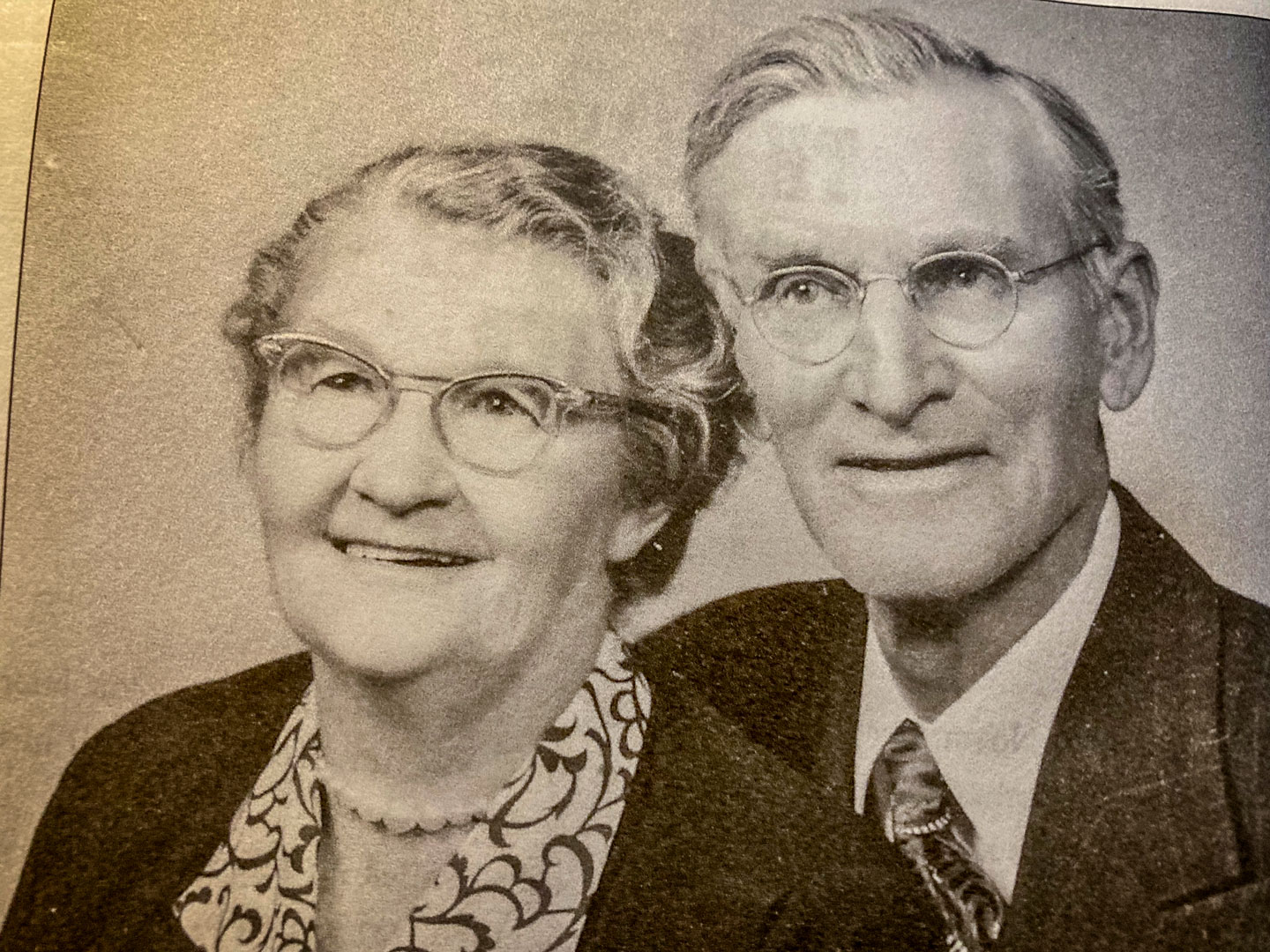Go forth and multiply: Heuer and Hier

Charlie (left) and Grace Hier at the ready with their rifles. Most of what was on the table was game brought in by Charlie’s rifle.
Pomeranian Prussians from Burow, Johann and wife Minnie (Glauss) Heuer arrived in the U.S. as immigrants in 1872.
Iowa farmland looked good, so the Heuers claimed it, and they farmed it for several decades. Charles Hier (the Americanized spelling of Heuer) was their second son, born four years later.
Growing up, young Hier’s lungs were weak. In his 20s, he sought better, dryer and cleaner air. In 1900, he and two buddies took off west, moving to Colorado. All accomplished equestrians, they horsed around in the San Luis Valley, day laboring until Hier thought prospects looked better up north.
He found his way to Sedalia, working first at the Lanham Farm on West Plum Creek and then renting a piece of it. He must have talked his new home up, as his brother Bob and sister Minnie joined him there. Frugal as Germans are wont to be, he saved enough to buy the Buntain Ranch just west of town on Lehigh Gulch in 1902 from William Padfield. The price: $4,320.
Having presumably impressed Grace Curtis of the Oaklands Ranch down the road, the couple tied the knot in 1903.
Their farmstead became home for their seven children, each integrally involved in the many chores that were part of dairying and farming. Oats, barley and corn were the principal crops. Over time, Hier grew his landholdings by adding bits and pieces, buying available land offered by Mrs. Arthur White and the Dunlap family. By then, 1,040 acres, Hier’s was one of Sedalia’s largest ranches.
Hier, the man, was of a character that inspires admiration and creates legacies. Comfortable in the outdoors in or out of a saddle, he provided for the family. His grandson, Chet, tells the story about hearing his grandmother mention they were out of meat. No sooner said, Hier picked up his rifle, loaded the truck, and drove off to bag a deer or two.
Hier was also a crack shot. It was said he could beat out anyone. One story has him lying down, putting his lever action rifle between his toes and shooting. “Grandpa always came home with more turkeys than anyone else,” recalled Chet in his book, Let Me Think a Minute.
His love of horses carried over into racing. This gave rise to a race track he fashioned behind the family barn. Not satisfied with simply local success, Hier bred thoroughbred horses, several that ran in the Kentucky Derby. This love also carried over to rodeo, and he attended every fair around, never missing the Douglas County event. His family hunting expeditions into the primitive areas of Mt. Evans were always the talk of the town.
In a day where ruffians still were legion, Hier was a teetotaler, also known never to have uttered a cuss word. His honesty was epic; those who knew him well would talk about it, marveling at his moral code. As decent a man as he was, he never passed up a chance to “shoot the bull” at local events and when trading livestock.

Charlie and Grace Curtis Hier on their 50th wedding anniversary.
To say the Hier family was prodigious would be an understatement. With seven children, they launched a significant chunk of Douglas County. In a 1984 Our Heritage – People of Douglas County book, the Hier heirs took up nearly half a type-written page. In 1953, Heir and his bride celebrated their 50th wedding anniversary.
Check back next month for an update on Hier’s grandson, Chet. He regales stories weekly at Bud’s Bar in Sedalia.
By Joe Gschwendtner; photos courtesy of Chet Hier’s book Let Me Think a Minute